Movable Guitar Chords
| |
Tweet |
Movable guitar chords are simply chord shapes that can be positioned at any fret using the same finger formation (unlike open chords, which can only be played in one position).
So once you learn the fingering for a movable chord, you can position it at the appropriate fret for the key in which you're playing.
 Free
chord cheat sheet
Learn how guitar chords work together in any key...
Click
here to start now Free
chord cheat sheet
Learn how guitar chords work together in any key...
Click
here to start now |
Now, it would be easy for me to simply throw a bunch of chord charts in front of you (like most guitar sites), and there will be charts later on to help.
But first, I want to encourage you to learn how to create your own movable chords, because...
a) No chord chart on this earth will be able to cover every possible chord voicing, and...
b) When you can create your own chords, you no longer need to rely on chord charts to tell you where to put your fingers.
All you need are some visual references on the fretboard...
Easy ways to create your own movable guitar chords
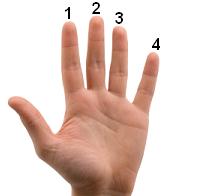
Cutting down barre chord forms
Movable chord forms can be seen as alternatives to playing full form barre chords.
Many guitarists prefer to "cut down" those fuller, 5 and 6 string barre chord shapes to just 3 or 4 strings.
This allows for a more efficient use of your fingers (since fewer fingers are required to play the chord) and, as a result, you can make quicker, more complex chord changes. Smaller chord shapes are also better for guitarists with smaller hands/fingers.
For example, taking the E form barre chord, we could cut out the low and high E strings and just use the middle part of it to create a simpler, movable shape.
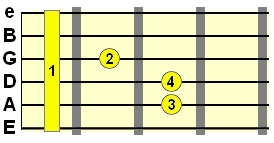
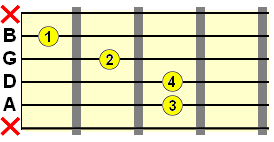
So that's a good initial exercise for you to try if you've already learned some barre chord forms (major, minor, 7th, sus etc.). Try cutting them down to 3 or 4 string shapes, using the top, middle or bottom part of the full shape.
Building movable chord shapes from scale patterns
You might want to skip this one for the time being if you've only just started with scales. If, however, you know a few scale patterns, you can use these as the scaffolding for building chord shapes.
Not a lot of guitarists realise that scales and chords are intrinsically connected on the fretboard.
For example, once you understand the intervals that make up a major triad (1 3 5), you can identify these intervals grouped within a major scale pattern and use that formation to build a chord shape.
Take the below major scale pattern and you'll see how we can literally pull a related chord shape from the arrangement of tones (in the below example, we've pulled out the same major triad as above)...
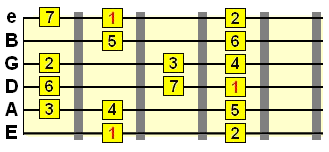
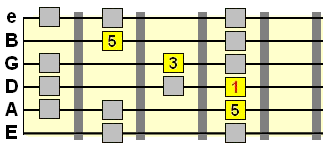
This is a fun way of finding interesting new chords. You don't even need to know what they're called (that can come later), just use your ears to judge whether it sounds good or not. As they'll be pulled from a scale, they will naturally be compatible with that scale.
In short, use major scales (Ionian, Mixolydian, Lydian, Phrygian Dominant etc.) as the scaffolding for major chords and minor scales (Dorian, Aeolian, melodic minor etc.) to build minor chords.
Movable guitar chord charts - Triads
Note that if you're interested in learning the theory behind how these movable guitar chords are constructed, head to the guitar chord theory section. If, however, you just want to learn the fingerings, see below.
With the below triad chord shapes, the root note is marked in red. This is the note that dictates which letter we use when writing the chord (e.g. G major, F minor, D7 etc.). Simply start by positioning that root note at the appropriate fret for the chord you want and then build the rest of the shape from there.
I say "simply" - it's crucial you know the notes on the fretboard to locate these root strings.
For example, if I wanted C major, I would position the root note from one of the major shapes below on the note C (on that shape's root string) and build the rest of the shape in that position. As we can position these shapes at any fret, I'm not going to specify a fret number on the diagrams...
Major Triads (1 3 5)
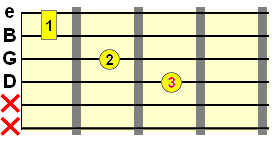 |
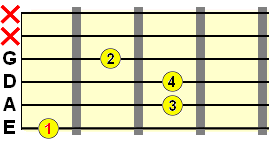 |
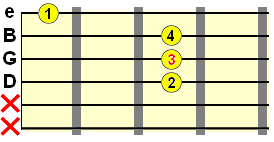 |
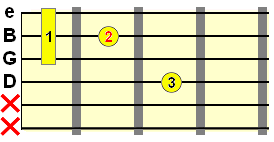 |
Minor Triads (1 ♭3 5)
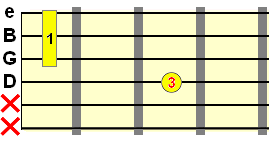 |
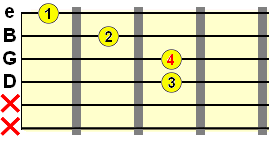 |
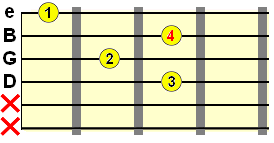 |
Augmented Triads (1 3 ♯5)
Words commonly used to describe augmented chords - tense, unstable, unresolved, unsettled. They tend to be used straight after a major triad on the same root. For example:
Dmaj / Daug / Gmaj / Em
Or, on the dominant chord position before returning to the major tonic (in this example, the tonic is G major):
Gmaj / Em / Am / Daug / Gmaj
Now, you'll notice that 3 of these shapes below share the exact same fingering, yet the root notes are on different strings. The reason for this will be covered in a separate lesson, I don't want to confuse you with too much info on one page.
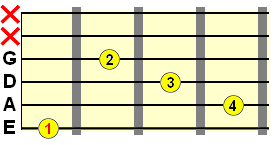 |
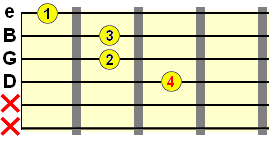 |
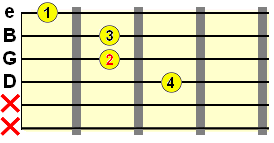 |
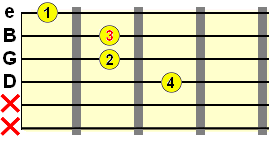 |
Diminished Triads (1 ♭3 ♭5)
See the diminished guitar chords lesson for some theory behind these magnificant chords and how you can use them effectively. However, diminished chords tend to be used very sparingly, so don't feel you must learn these (and augmented, for that matter) with the same rigor as major and minor triads.
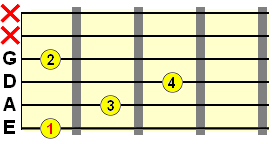 |
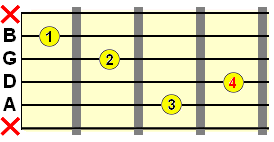 |
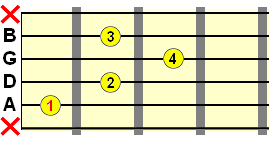 |
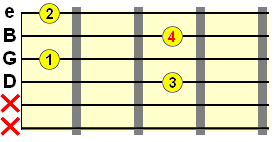 |
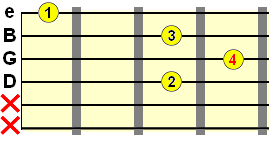 |
The next part will cover 7th chords. In the meantime, try and at least memorise the major and minor movable guitar chord forms and try making your own shapes from both the fuller barre chord forms you know and using scale patterns as the building blocks.
| |
Tweet |
Sign up to the newsletter for updates and grab your free Uncommon Chords book
More Coming Soon!
Main Guitar Chords Section







